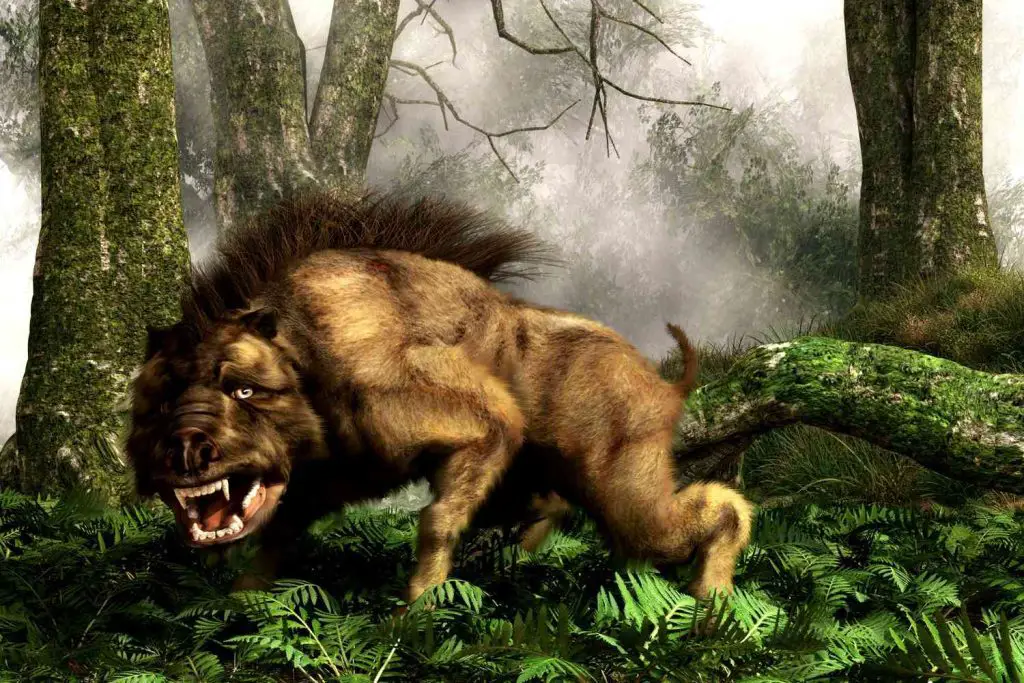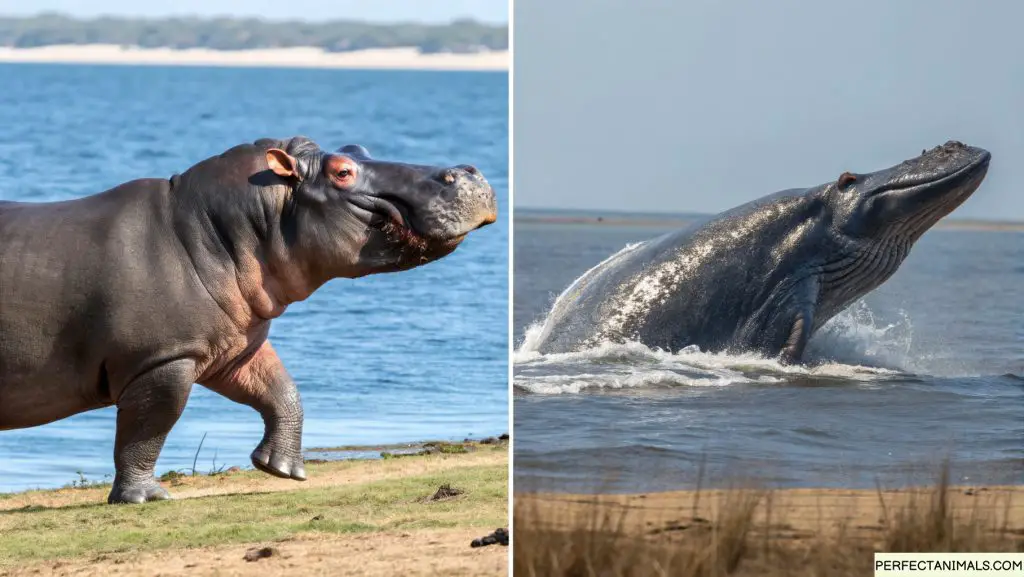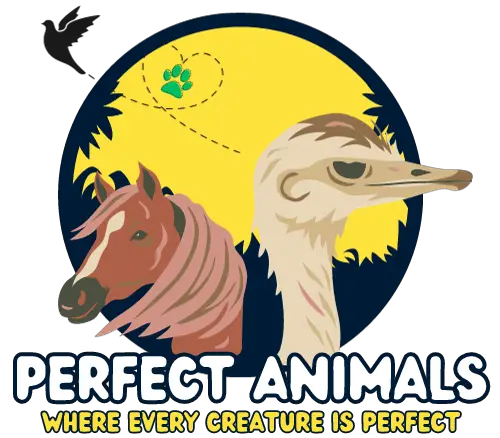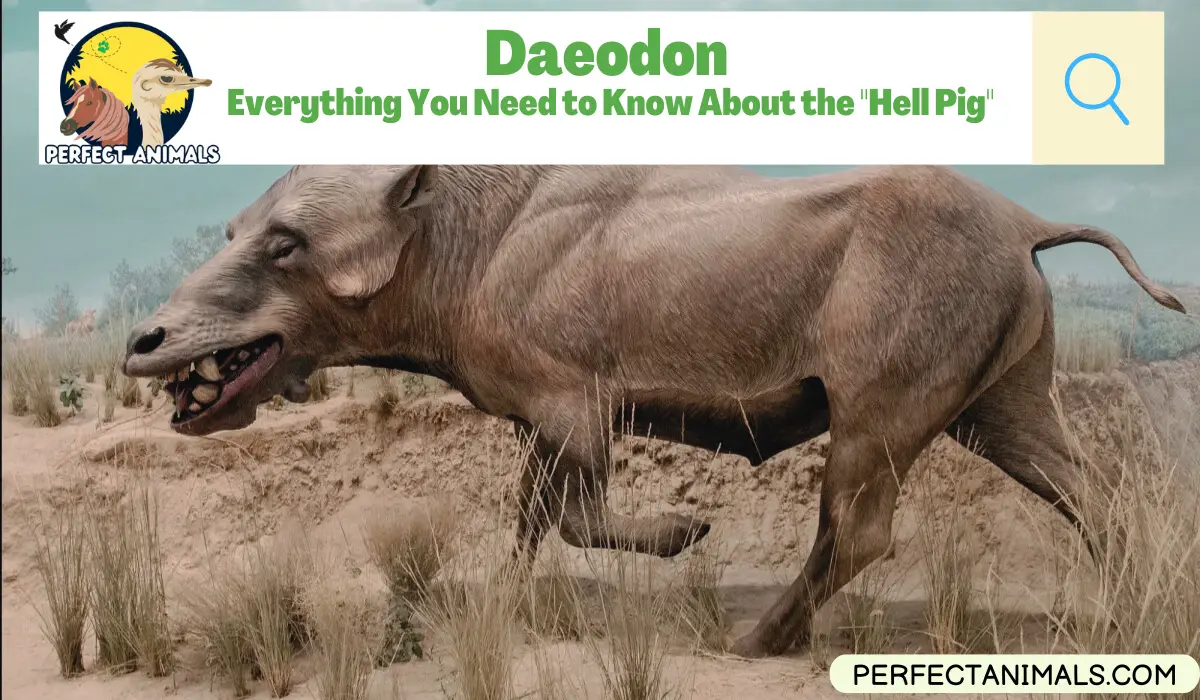Ever heard of a prehistoric pig the size of a cow with teeth that could crush bones?
Meet the Daeodon – one of the most terrifying mammals that ever walked North America.
These massive beasts roamed the planet millions of years ago, and honestly, I’m kind of glad they’re extinct because running into one would be absolutely nightmare fuel.
Despite being nicknamed “hell pigs” and “terminator pigs,” these creatures weren’t actually pigs at all. Plot twist, right?
If you’ve played Ark: Survival Evolved, you might know Daeodons as the healing animals, but the real prehistoric version was way different (and way scarier) than the game portrays.
Let’s dig into what these ancient monsters were really like and why they’re so fascinating to paleontologists today.
What is the Real Name of the Daeodon?
The official scientific name is Daeodon shoshonensis, which is what you’ll find in modern paleontology texts.

The name “Daeodon” comes from Greek and translates to “dreadful tooth” – which is pretty accurate when you see their massive chompers.
Here’s where it gets a bit confusing: if you’re looking at older museum displays or historic research, you might see the name “Dinohyus” instead, which means “Terrible Hog.”
Turns out, scientists eventually figured out that Dinohyus and Daeodon were actually the same animal. So Daeodon became the accepted name, and Dinohyus got retired.
Either way, both names basically translate to “scary prehistoric beast with gnarly teeth,” so they got that part right.
The “shoshonensis” part of the name refers to where many of the fossils were found – in the Shoshone region of North America.
So when you’re talking about these creatures, Daeodon is the name to use unless you want paleontologists giving you the side-eye for using outdated terminology.
Are Daeodons Related to Pigs?
This is where things get really interesting – Daeodons aren’t actually pigs, despite looking like absolutely massive, terrifying versions of wild boars.
They definitely earned those “hell pig” and “terminator pig” nicknames based on appearance alone. They’ve got the snout, the body shape, and that general pig vibe going on.

But here’s the kicker: Daeodons are more closely related to hippos and whales than they are to modern pigs. Yeah, whales. Let that sink in.
They all belong to the same large group called Artiodactyla (even-toed ungulates), but genetic and anatomical studies show that Daeodons split off on a different evolutionary branch.
What we’re seeing with the pig-like appearance is something called convergent evolution – when completely unrelated animals evolve similar features because they live similar lifestyles.
Think of it like how sharks and dolphins look similar even though one’s a fish and one’s a mammal. They both need to swim fast, so they ended up with similar body shapes.
Daeodons looked like pigs because that body type worked well for their omnivorous, ground-dwelling lifestyle – not because they share a recent common ancestor with pigs.
So next time someone calls them prehistoric pigs, you can be that person who corrects them. You’re welcome.
Are Daeodons Aggressive?
Image prompt: Artistic reconstruction of aggressive Daeodon with teeth bared, intimidating pose, prehistoric landscape
Oh, you better believe these things were aggressive.
The name literally means “dreadful teeth” – nobody names a peaceful, gentle creature that.

Fossil evidence paints a picture of an animal that was ruthlessly violent when it came to getting food and defending territory.
Their jaw muscles were absolutely massive, designed for delivering crushing bites that could break bones. This wasn’t an animal that nibbled politely on plants.
Scientists believe Daeodons were both active hunters and powerful scavengers. They’d hunt their own prey when they felt like it, but they were also perfectly happy to show up at someone else’s kill and bully them off it.
The wear patterns on their fossilized teeth suggest they regularly chomped through bone, which means they were eating entire carcasses – not just the soft parts.
They likely fought each other too, probably over territory, mates, or just because they were in a bad mood. Some researchers describe their hunting style as “legitimately hateful” which is both hilarious and terrifying.
Imagine a 2,000-pound animal with a three-foot skull full of bone-crushing teeth that has anger management issues. That’s your Daeodon.
These weren’t passive omnivores peacefully grazing in meadows. They were apex predators that dominated their environment through sheer size and aggression.
What is the Closest Living Relative to the Daeodon?
This answer surprises pretty much everyone: hippopotamuses and whales are Daeodon’s closest living relatives.

I know, I know – one’s a semi-aquatic African mammal and the other lives entirely in the ocean. Neither one looks anything like a giant prehistoric pig-thing.
But evolution is weird like that.
Daeodons belong to a family called entelodonts, which branched off from the same evolutionary line that eventually produced hippos and cetaceans (whales and dolphins).
So while Daeodons were terrorizing ancient North American plains, their distant cousins were off evolving into water-dwelling creatures.
Modern pigs and peccaries? They’re on a completely different branch of the evolutionary tree, despite the visual similarities.
This is why paleontology is so cool – appearances can be super deceiving when it comes to figuring out who’s actually related to whom.
Next time you see a hippo at the zoo, just remember: millions of years ago, their cousin was running around with a skull the size of a coffee table, crushing bones for breakfast.
What Do Daeodons Eat?
Daeodons were true omnivores, but let’s be real – they were way more interested in meat than salad.
Their jaws and teeth were specifically designed to crush through bone, which tells you everything you need to know about their dietary preferences.

They’d eat pretty much anything: plants, roots, small animals, large animals, fresh kills, rotting carcasses – if it had calories, it was on the menu.
But their massive size and aggressive nature meant they could dominate food sources that other animals couldn’t access or defend.
Think of them as the prehistoric version of that friend who says they’re not picky about where to eat but somehow always ends up choosing the steakhouse.
Daeodons likely scavenged a lot, using their size and attitude to scare off other predators from their kills. Why hunt when you can just steal?
Their bone-crushing ability meant they could extract every bit of nutrition from a carcass – marrow, bones, everything. Nothing went to waste.
They probably also dug up roots and tubers with their strong snouts when meat was scarce, but let’s face it, these things were built for carnivory.
Their omnivorous diet was more about survival flexibility than preference. They could eat plants, but they preferred meat.
How Big Was the Daeodon Skull?
Image prompt: Museum display of complete Daeodon skull next to human for scale, showing massive size
The skull alone could reach about 90 centimeters (roughly 3 feet) in length.
Just the head. Three feet of solid bone and terrifying teeth.
To put that in perspective, that’s probably longer than your entire torso. Now imagine that skull attached to a body.
The full animal stood around 5.8 to 6 feet tall at the shoulder – about the height of a tall human, but way more massive and built like a tank.
From snout to tail, Daeodons could reach up to 12 feet long and weighed somewhere in the neighborhood of 2,000 pounds or more.
That’s bigger than pretty much any pig species alive today – modern wild boars look like piglets compared to these absolute units.
The skull size wasn’t just for show, either. All that bone supported massive jaw muscles that could generate incredible bite force.
Those jaws housed teeth that were designed for puncturing, crushing, and tearing – a complete toolkit for dealing with any food source.
Standing next to a Daeodon skull in a museum is a humbling experience. It really drives home how terrifying these animals must have been in person.
How Fast Do Daeodons Heal?
Okay, so this question comes up a lot because of Ark: Survival Evolved, where Daeodons have this awesome group healing ability.
In the game, they can heal other creatures by consuming food and converting it to health. It’s a super useful mechanic and makes Daeodons valuable tames.
But here’s the truth: there’s zero scientific evidence that real Daeodons had any special healing abilities.
They were large mammals with normal large mammal healing rates. No magic, no supernatural regeneration, just regular biology.
The healing thing is purely a game mechanic – the developers needed to give Daeodons a useful ability, and healing fit with the “support” role they wanted the creature to play.
In reality, if a Daeodon got injured, it would heal at roughly the same rate as any other animal its size – probably fairly slowly given how massive they were.
The fossil record doesn’t preserve healing rates, so we can only make educated guesses based on modern animals of similar size.
So if you were expecting to learn about some miraculous prehistoric healing factor, sorry to disappoint. Real Daeodons were scary and aggressive, not magical healers.
But hey, they could crush bones with their jaws, which is arguably cooler than healing anyway.
How Did Daeodon Go Extinct?
Image prompt: Artistic reconstruction of dry prairie landscape with dying vegetation, climate change impact, Miocene period
Daeodons went extinct during the middle Miocene epoch, roughly 16 million years ago, along with all other entelodonts.

The main culprit? Climate change – specifically, a major shift in North American ecosystems.
The environment transformed from thick, lush forests into dry, open prairies. For an animal that thrived in forest environments, this was bad news.
These ecosystem changes wiped out many of Daeodon’s food sources. Plants died off, prey animals adapted or disappeared, and suddenly being a massive omnivore became a liability.
Daeodons needed a lot of calories to maintain their huge bodies. When food became scarce due to drought and habitat loss, they couldn’t adapt fast enough.
There’s no strong evidence that competition from other predators or being hunted drove them to extinction. It was really about environmental changes they couldn’t survive.
This is a common extinction pattern – when the world changes faster than a species can adapt, that species disappears.
It’s a reminder that even apex predators that dominate their environment can be vulnerable to large-scale climate shifts.
The entelodonts had been successful for millions of years, but when their world changed too drastically, even being big and scary wasn’t enough to save them.
Final Thoughts
Daeodons were genuinely some of the weirdest and wildest mammals that ever existed in North America.
These things were big, aggressive, and absolutely dominated their environment for millions of years before climate change ended their run.
The fact that they’re more closely related to hippos than pigs just adds to how bizarre prehistoric life could be. Evolution doesn’t care about making sense to us.
Daeodons prove that the prehistoric world was stranger than any fiction we could dream up. A pig-shaped creature the size of a cow with a three-foot skull that crushes bones and might be related to whales? That’s nature being creative.
While they’re extinct now, their fossils tell an incredible story about life on Earth millions of years ago – and remind us that apex predators can still be vulnerable to environmental changes.
When you’re in Ark and your Daeodon is healing your dinosaurs, just remember: the real version was way scarier and definitely wouldn’t be helping anyone. 🙂
You May Also Like
Resources – (for further reading)
Wikipedia – Daeodon
Wikimedia Commons – Category:Daeodon_skulls
Prehistoric Fauna Reconstructions – Daeodon (Hell Pig)

Jesse is a dedicated animal keeper at Lincoln Park Zoo, where he attends to the needs of various mammal species. His hands-on experience and knowledge about animal behaviors and conservation fuel his passion for writing about wildlife during his free time.


